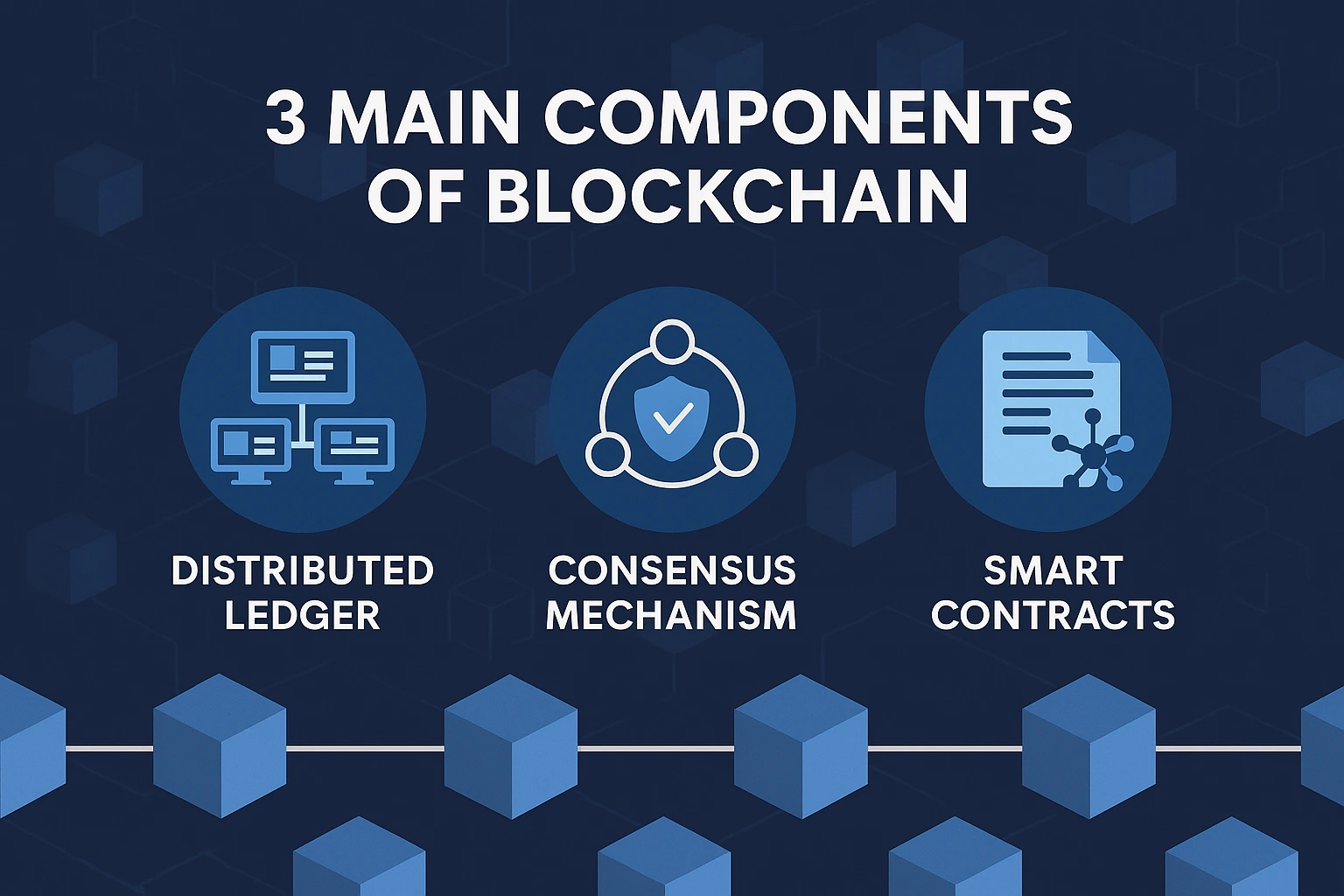Blockchain technology powers cryptocurrencies and a wide range of decentralized applications. But what makes blockchain secure, transparent, and decentralized? The answer lies in its three fundamental components. In this article, we’ll explore the three core components of blockchain and explain how they work together to create a robust digital ecosystem.
1. Distributed Ledger
The distributed ledger is the foundation of blockchain. It is a shared, immutable database that stores all the transactions across a decentralized network. Every node (computer) in the network holds a copy of this ledger, ensuring transparency and trust.
Key Features of the Distributed Ledger:
- Decentralized Storage: No central authority controls the data.
- Immutable Records: Once added, data cannot be altered or deleted.
- Transparency: Anyone on the network can verify transactions.
Each block in the ledger contains a cryptographic hash of the previous block, a timestamp, and a batch of transaction data. The blocks are linked together in chronological order, forming a chain that grows continuously—hence the term “blockchain.”
2. Consensus Mechanism
Consensus mechanisms are protocols used to validate transactions and ensure all nodes in the network agree on the current state of the blockchain. They prevent double-spending, validate new blocks, and keep the blockchain secure and synchronized.
Popular Consensus Mechanisms:
- Proof of Work (PoW): Requires miners to solve complex mathematical problems. Used by Bitcoin.
- Proof of Stake (PoS): Validators are chosen based on the number of coins they hold and are willing to “stake.”
- Delegated Proof of Stake (DPoS): Stakeholders vote to elect a few nodes to validate transactions.
The consensus algorithm ensures that all transactions are verified and prevents malicious actors from taking control of the network. Without it, blockchain’s decentralized trust model wouldn’t function.
3. Smart Contracts (and Virtual Machines)
Smart contracts are self-executing digital contracts with predefined rules written in code. They automatically execute actions when conditions are met—eliminating the need for intermediaries.
Smart Contracts Operate via Virtual Machines:
- Ethereum Virtual Machine (EVM): Enables decentralized apps (dApps) and smart contract execution on Ethereum.
- Security: Contracts are immutable once deployed, reducing fraud risks.
- Automation: Enables fast, automated processes in industries like finance, logistics, and real estate.
Virtual machines execute contract code in a secure, sandboxed environment. These components help blockchains extend beyond currency transfers into programmable infrastructure.
Additional Supporting Elements
While the three main components are crucial, blockchain also includes other supporting features:
- Nodes: Devices on the blockchain network that store and validate the ledger.
- Cryptographic Hashing: Ensures data security and links blocks together.
- Tokens and Cryptocurrencies: Often used to incentivize participation in public blockchains.
FAQs About Blockchain Components
What is the most important component of blockchain?
All three components are essential, but the distributed ledger is the foundation upon which everything else is built.
What is the role of consensus in blockchain?
Consensus mechanisms validate transactions and ensure that all participants agree on the blockchain’s current state.
Do all blockchains use smart contracts?
No. Bitcoin, for example, does not have native smart contract capabilities like Ethereum. Smart contracts are more common on advanced platforms.
How does hashing contribute to blockchain security?
Hashing secures data by generating a fixed-length signature for input data. Any tampering with the data changes the hash, signaling manipulation.
Can blockchain exist without decentralization?
In theory, yes—private blockchains are centralized to some degree—but decentralization is key to blockchain’s trustless nature.
Conclusion
The three core components of blockchain—distributed ledger, consensus mechanism, and smart contracts—work together to make blockchain secure, transparent, and decentralized. Each plays a vital role in ensuring that data is verified, tamper-proof, and agreed upon across the network. As blockchain adoption continues to grow, understanding these fundamental components is crucial for developers, investors, and anyone interested in digital innovation.

Selina Davies is a technology writer and blockchain enthusiast with a passion for simplifying complex topics. With years of experience in fintech and decentralized systems, she focuses on educating readers about the future of digital innovation through clear, accurate, and engaging content.
